EMEA
Filter By
Browse By
- SAP Analytics and AI
- SAP Application Development and Integration
- All SAP Application Development and Integration
- SAP ABAP
- SAP ABAP Development Tools
- SAP ABAP Test Cockpit
- SAP API Management
- SAP BAPI
- SAP Basis
- SAP BRF
- SAP Business Application Studio
- SAP CMS
- SAP Design Studio
- SAP Development Tools
- SAP DevOps
- SAP EAI
- SAP EDI
- SAP Extension Suite
- SAP Fiori
- SAP Fiori Elements
- SAP Integration Suite
- SAP Low Code Application Development
- SAP Low Code Automation
- SAP Netweaver
- SAP Release Management
- SAP UI5
- SAP Web Application Server
- SAP Web IDE
- SAP Business Process Management
- SAP Center of Excellence
- SAP CIO
- SAP Customer Experience
- SAP Data and Data Management
- All SAP Data and Data Management
- SAP BW
- SAP BW/4HANA
- SAP Crystal Reporting
- SAP Data Archiving
- SAP Data Center
- SAP Data Governance
- SAP Data Integration
- SAP Data Migration
- SAP Data Quality
- SAP Data Services
- SAP Data Strategy
- SAP Data Visualization
- SAP Data Warehouse Cloud
- SAP DMS
- SAP Document Control
- SAP EIM
- SAP ETL
- SAP ETL Tools
- SAP HANA
- SAP HANA Administration
- SAP HANA Deployment Infrastructure
- SAP HANA Studio
- SAP Master Data
- SAP Master Data Governance
- SAP MDM
- SAP Enterprise Architect
- SAP Enterprise Asset Management
- SAP ERP
- SAP Finance
- All SAP Finance
- SAP Accounting
- SAP AR AP
- SAP Asset Accounting
- SAP Billing Systems
- SAP BPC
- SAP BRIM
- SAP Cash Management
- SAP Central Finance
- SAP Controlling
- SAP COPA
- SAP Cost Center Accounting
- SAP e-invoicing
- SAP FICO
- SAP Finance Automation
- SAP Financial Closing Cockpit
- SAP Financial Consolidation
- SAP Financial Planning
- SAP FX Risk
- SAP General Ledger
- SAP Global Tax Management
- SAP Hyperion
- SAP Order to Cash
- SAP Payment Processing
- SAP Profitability Analysis
- SAP Rebate Management
- SAP S/4HANA Finance
- SAP Universal Journal
- SAP Governance Risk and Compliance
- SAP Human Capital Management
- SAP Intelligent Technologies
- SAP Platform and Technology
- All SAP Platform and Technology
- SAP Business Technology Platform
- SAP Cloud Connector
- SAP Cloud Integration Platform
- SAP Cloud Migration
- SAP Cloud Platform
- SAP Cloud Providers
- SAP Cloud Strategy
- SAP Container Platform
- SAP Digital Asset Management
- SAP Digital Integration Hub
- SAP Digital Signature
- SAP HANA Enterprise Cloud
- SAP HEC
- SAP Hyperscalers
- SAP Infrastructure
- SAP Messaging
- SAP Smart Forms
- SAP Quality and Testing
- SAP Security
- SAP Spend Management
- SAP Supply Chain Management
- All SAP Supply Chain Management
- SAP APO
- SAP Asset Management
- SAP Business Network
- SAP Digital Manufacturing Cloud
- SAP Digital Twin
- SAP EWM
- SAP IBP
- SAP Inventory Management
- SAP Label Printing
- SAP Logistics
- SAP Manufacturing
- SAP Manufacturing Automation
- SAP MES
- SAP MII
- SAP MM
- SAP MRO
- SAP MRP
- SAP Order Management
- SAP Plant Maintenance
- SAP PLM
- SAP Production Planning
- SAP S&OP
- SAP SD
- SAP SPM
- SAP Supply Chain Planning
- SAP Track and Trace
- SAP Transportation Management
- SAP System Administration
SAP EMEA is the region where the parent company of SAP resides. Founded in 1972, the company headquarters are located in Walldorf in the south of Germany.
What is SAP?
SAP stands for Systems Applications and Products in data processing. SAP has over 100,00 employees worldwide are supporting more than 440,000 customers across 180 countries. It is a global network of customers, partners, employees and thought leaders all helping the world run better and improve people’s lives. About 80% of its customers are small and midsized companies.
SAP EMEA is the region where the parent company of SAP resides. Founded in 1972, the company headquarters are located in Walldorf in the south of Germany.
What is SAP?
SAP stands for Systems Applications and Products in data processing. SAP has over 100,00 employees worldwide are supporting more than 440,000 customers across 180 countries. It is a global network of customers, partners, employees and thought leaders all helping the world run better and improve people’s lives. About 80% of its customers are small and midsized companies.
What does SAP do?
SAP develops software solutions to help organizations of all sizes and all industries run their businesses profitability, adopt continuously, and grow sustainably. The software collects and processes data on one platform, covering everything from raw material purchasing to customer satisfaction. SAP solutions can be installed on premise or used from the cloud helping companies to design and evaluate the entire value chain. They can help to seamlessly link operational data on business processes with experience data, this enables companies to better understand and respond to their customers. SAP strives to drive innovation, high performance, and employee satisfaction with these key values:
- Purpose: To help every customer with a best run business through purpose and profit.
- Vision: Help the world run better and to improve people’s lives.
- Mission: Deliver technology to help the world run better and improve people’s lives.
- Strategy: To enable enterprises to become intelligent, networked, and sustainable – bringing together the solutions.
Total revenue in 2021 was €27.84billion, including €9.4 billion from its cloud business which is expected to reach more than €22 billion by 2025. Today, SAP customers generate 87% of total global commerce. With concern about the climate crisis, the company aims to become carbon neutral in its own operations by year 2023, which is two years earlier than originally planned.
SAP offers application software for businesses such as supplier relationships, production, warehouse management, sales, customer relationships, and administrative functions. Today, SAP has more than 230 million cloud users and more than 100 solutions covering various business functions. SAP’s machine learning, Internet of Things (loT) and advanced analytics technologies help turn businesses into intelligent enterprises. SAP Business Technology Platform brings together application development, data and analytics, integration, and AI into one platform. It is the central element of SAP’s “RISE with SAP” offering.
287 results
-

- SAP Inventory Management
 Premium
Premium
Leveraging Association-Rule Mining in Logistics Planning
Published: 15/July/2022
Reading time: 2 mins
Inventory optimization remains a key focus area for SAPinsiders, as highlighted in our most recent research report, Inventory Optimization and Management. When organizations undertake an inventory optimization initiative, they typically leverage conventional multi-echelon inventory optimization tools that leverages inventory placement in conjunction with integer programming and statistical methods to determine how much inventory to hold…
-

- SAP Analytics
 Premium
Premium
Critical Skills for The Future of Supply Chain Planning
Published: 15/July/2022
Reading time: 3 mins
In response to the survey for our upcoming research report, Supply Chain Planning in The Cloud, SAPinsiders highlighted advanced analytics capabilities as the top technology when the current state and immediate next steps timeframe are considered together, as shown in figure 1. As you can see from figure 1, SAPinsiders have indicated that they have…
-

- SAP Supply Chain Planning
 Premium
Premium
Cloud Can Address Supply Chain Planning Challenges
Published: 15/July/2022
Reading time: 2 mins
Supply chain planning capabilities have evolved from being a portfolio of tools and technologies used to run and plan supply chain operations to a set of capabilities that can be leveraged to build business agility in resiliency in today’s complex business environment. Cloud provides additional capabilities to supply chain planning technologies to align better with…
-
-

Customizations Challenge SAP S/4HANA Finance Adoption
Published: 09/July/2022
Reading time: 3 mins
Data from our recent research on SAP S/4HANA Finance and Central Finance shows SAPinsider organizations increasingly recognize the potential benefits of SAP S/4HANA Finance, and we expect to see continued adoption in the coming years. SAP S/4HANA Finance offers many advantages over traditional SAP ERP financial accounting and reporting methods, including improved accuracy, transparency, and…
-
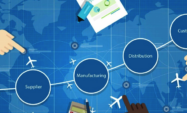
- SAP Supply Chain Planning
 Premium
Premium
Strategies to Build Supply Chain Planning Foundations
Published: 08/July/2022
Reading time: 2 mins
SAPinsider will be publishing a research report, Supply Chain Planning in The Cloud this month. As the survey for this research come to a close, many interesting insights emerge. One of the key ones is how SAPinsiders view supply chain planning as an important tool to build business resiliency and agility. Since the top business drivers…
-

- SAP Supply Chain Planning
 Premium
Premium
Developing a Supply Chain Visibility Roadmap
Published: 08/July/2022
Reading time: 2 mins
SAPinsider will be publishing a research report, Supply Chain Planning in The Cloud this month. As the survey for this research come to a close, many interesting insights emerge. One of the key ones is how SAPinsiders view supply chain planning as an important tool to build business resiliency and agility. Since the top business drivers focus...…
-
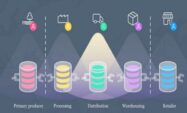
- SAP Supply Chain Planning
 Premium
Premium
Eliminating Data Silos for Supply Chain Analytics
Published: 07/July/2022
Reading time: 3 mins
Fragmentation of data remains a key obstacle on the path of integrated supply chain planning. Many organizations have invested in point systems for planning various elements of supply chains over the years, have legacy systems, and also have data pertaining to supply chain residing in enterprise systems like ERP, CRM etc. With the advent of…
-
-
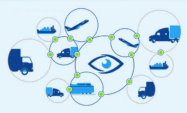
Supply Chain Planning and Business Agility
Published: 06/July/2022
Reading time: 1 mins
SAPinsider will be publishing a research report, Supply Chain Planning in The Cloud this month. As the survey for this research come to a close, many interesting insights emerge. One of the key ones is how SAPinsiders view supply chain planning as an important tool to build business resiliency and agility. This was evident in…
-
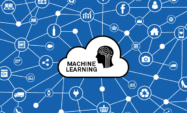
- SAP Marketing Analytics
 Premium
Premium
Leveraging Machine Learning on Customer Intelligence Data
Published: 01/July/2022
Reading time: 4 mins
A key area that SAPinsiders highlight as one of the top business challenges: evolving customer expectations and demand. This has emerged as a top business driver in many of our research reports, including the most recent report, SAPinsider Process Automation and SAP S/4HANA. To meet the rapidly evolving customer expectation and demands, organizations need to understand their…
-

- SAP Process Automation
 Premium
Premium
Increasing Focus on Supply Chain Process Automation
Published: 01/July/2022
Reading time: 2 mins
Process automation technologies have increasingly evolved into strategic solutions during the last few years. And recently we have seen an increased focus on supply chain process automation. While the focus in the initial years of process automation adoption was primarily on achieving cost reduction, process visibility and employee productivity have increasingly become important objectives now…
Featured Experts
-

Akash Kumar
Associate General Manager, HCL
-

Carles Lamas Martinez
PARTNER, CUVIV BUSINESS SERVICES SL
-

Christoph Aschauer
Director for SAP Solutions at Logpoint
Become a Member
Unlimited access to thousands of resources for SAP-specific expertise that can only be found here.
Upcoming Events
-
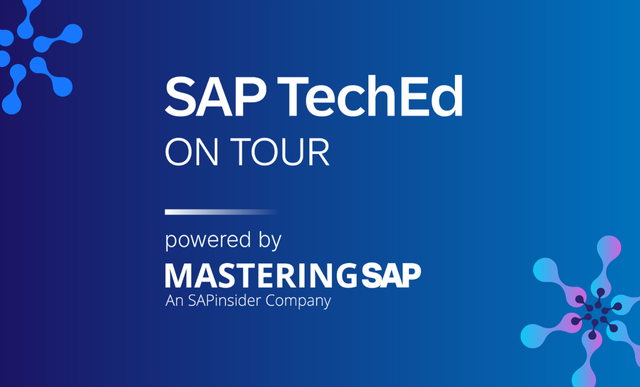
SAP TechEd on Tour, powered by Mastering SAP
November 12 - 14, 2025
Sydney, New South Wales
Australia
View Event
Related Vendors
Your request has been successfully sent

